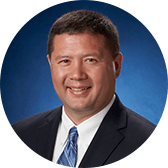No one should have to suffer from shoulder pain when there are many treatments to alleviate the problem, including a Total Shoulder Replacement. Before any course of action is determined, however, a total assessment is key. The place to start is with a complete medical evaluation at the Colorado Center of Orthopaedic Excellence in Colorado Springs, Colorado, where their highly-trained and experienced shoulder specialists can pinpoint the exact cause of pain and determine the best course of treatment. Depending on the extent of damage, a Total Shoulder Replacement might, in fact, be the best path to recovery.
Overview
Shoulder pain can come from any number of sources, from accidents and injuries, disease, or simply overuse. It can come from the natural wear and tear of aging. The pain can come on gradually or abruptly and may range from mild to excruciating. Shoulder pain can make many activities you typically take for granted—brushing and combing your hair, pulling a shirt over your head, or reaching up for something on a shelf—seem monumental. Shoulder pain can affect one’s mood, sleep, and overall quality of life.
About The Shoulder
Much like the hip, the shoulder is a ball-and-socket joint that rotates with a greater range of motions than any other joint in the body. Shoulder bones include the clavicle (collar bone), scapula (shoulder blade), and humerus (upper arm bone). When working properly, these bones are lubricated by fluid, cushioned by cartilage, and held together by muscles, tendons, and ligaments that let the bones glide easily against each other. While one of the most mobile joints in the body, the shoulder is also one of the most prone to instability and injury.
Possible Causes Of Shoulder Pain
Many things can damage the shoulder joint. Arthritis is the result of the cartilage in a joint being worn out over time resulting in painful bone rubbing on bone. Osteoarthritis is an age-related “wear and tear” type of arthritis, and rheumatoid arthritis is caused by an overactive immune system which causes inflammation that can damage the cartilage and occasionally the underlying bone in the joint. Rotator cuff injuries such as a tear, fractures that can occur as a result of a fall, sports injury, car accident, or any direct blow to the shoulder. Even overuse and repetitive sports that use the arms overhead, such as tennis, swimming, and baseball, can result in injury to the capsule, ligaments, and muscles that surround the shoulder joint. Some types of shoulder conditions can affect blood flow to the humerus. When a bone is starved of blood, it can collapse. Any of these conditions may require a Total Shoulder Replacement to achieve optimal pain relief.
What Is Total Shoulder Replacement
A Total Shoulder Replacement removes damaged areas of bone and replaces them with parts made of metal and plastic (implants). This surgery is called shoulder arthroplasty (ARTH-row-plas-tee). More than 50,000 people in the U.S. have total shoulder replacement surgery each year. The procedure is meant to relieve pain, improve strength and increase range of motion.
When Should Total Shoulder Replacement Surgery Be Considered?
- Shoulder pain limits everyday activities
- Loss of motion and weakness in the shoulder
- Stiffness and pain with overhead movement
- Moderate to severe pain while resting
- Pain affects sleep
- Insufficient pain relief from non-surgical treatments, such as non-steroidal anti-inflammatory drugs (NSAIDs), physical therapy, and steroid injections
Surgical Options
There are two types of Total Shoulder Replacement—anatomic (also known as traditional or conventional) and reverse total shoulder replacement.
Traditional Total Shoulder Replacement
In an anatomic shoulder replacement, both the damaged ball and socket joint surfaces of the shoulder are removed and replaced with artificial parts. The ball joint is replaced with a metal ball, and the socket is replaced with a smooth plastic socket. This type of procedure is helpful for patients with a functional rotator cuff, who suffer from osteoarthritis or other related conditions of the shoulder that cannot be successfully managed with non-surgical treatments.
Reverse Total Shoulder Replacement
In a reverse total shoulder replacement, the damaged ball and socket joint surfaces of the shoulder are also removed and replaced with artificial parts, but the location of those parts is reversed. This type of procedure is typically done for patients with a dysfunctional or torn rotator cuff who have developed arthritis as result. It can also be successfully used in patients with significant bone loss, fractures, and revision of prior replacement.
Getting The Right Diagnosis
Determining the source of the patient’s pain, and what type of treatment it requires, is a complex procedure in itself. The shoulder specialists at the Colorado Center of Orthopaedic Excellence, in Colorado Springs, Colorado, perform hundreds of total shoulder replacement surgeries each year and are recognized among the best. A consultation visit and initial appointment begin with a physical examination, X-rays, and a detailed and thorough review of the patient’s shoulder pain history. Additional imaging, such as an MRI, may be required. With this information, the shoulder specialists can answer any questions, address any concerns, determine if total shoulder replacement is an appropriate choice, and, if so, discuss the next steps.
[av_layout_row border=” min_height_percent=” min_height_pc=’25’ min_height=’0′ color=’main_color’ mobile=’av-flex-cells’ id=” av_element_hidden_in_editor=’0′ mobile_breaking=” av-desktop-hide=” av-medium-hide=” av-small-hide=” av-mini-hide=” av_uid=’av-vxxdt7′]
[av_cell_one_full vertical_align=’top’ padding=’30px,0px,0px,0px’ background=’bg_color’ background_color=” background_gradient_direction=’vertical’ background_gradient_color1=” background_gradient_color2=” background_gradient_color3=” src=” attachment=” attachment_size=” background_attachment=’scroll’ background_position=’top left’ background_repeat=’no-repeat’ link=” linktarget=” link_hover=” mobile_display=” mobile_col_pos=’0′ custom_class=” template_class=” av_uid=’av-l2gjc06l’ sc_version=’1.0′]
[av_heading heading=’Our Shoulder Surgeons’ tag=’h1′ style=’blockquote modern-quote’ subheading_active=” show_icon=” icon=’ue800′ font=” size=’36’ av-medium-font-size-title=” av-small-font-size-title=” av-mini-font-size-title=” subheading_size=’15’ av-medium-font-size=” av-small-font-size=” av-mini-font-size=” icon_size=” av-medium-font-size-1=” av-small-font-size-1=” av-mini-font-size-1=” color=’custom-color-heading’ custom_font=’#b01c10′ subheading_color=” seperator_color=” icon_color=” margin=” margin_sync=’true’ padding=’10’ icon_padding=’10’ headline_padding=” headline_padding_sync=’true’ link=’manually,http://’ link_target=” id=” custom_class=” template_class=” av_uid=’av-vezsrv’ sc_version=’1.0′ admin_preview_bg=”][/av_heading]
[av_one_fourth first min_height=” vertical_alignment=” space=” custom_margin=” margin=’0px’ row_boxshadow=” row_boxshadow_color=” row_boxshadow_width=’10’ link=” linktarget=” link_hover=” title_attr=” alt_attr=” padding=’0px’ highlight=” highlight_size=” border=” border_color=” radius=’0px’ column_boxshadow=” column_boxshadow_color=” column_boxshadow_width=’10’ background=’bg_color’ background_color=” background_gradient_color1=” background_gradient_color2=” background_gradient_direction=’vertical’ src=” background_position=’top left’ background_repeat=’no-repeat’ animation=” mobile_breaking=” mobile_display=” av_uid=’av-skp3m3′]
[av_image src=’https://ccoe.us/wp-content/uploads/2019/07/David_Weinstein_MD.png’ attachment=’3357′ attachment_size=’full’ align=’center’ styling=’circle’ hover=” link=’page,3639′ target=” caption=’yes’ font_size=’10’ appearance=’on-hover’ overlay_opacity=’0.4′ overlay_color=’#000000′ overlay_text_color=’#ffffff’ copyright=” animation=’pop-up’ av_uid=’av-qndtd7′ custom_class=” admin_preview_bg=”]
Specializing in sports medicine, knee surgery, and shoulder & elbow disorders.
[/av_image]
[av_textblock size=” font_color=” color=” av-medium-font-size=” av-small-font-size=” av-mini-font-size=” av_uid=’av-pirerf’ custom_class=” admin_preview_bg=”]
[/av_textblock]
[/av_one_fourth][av_one_fourth min_height=” vertical_alignment=” space=” custom_margin=” margin=’0px’ row_boxshadow=” row_boxshadow_color=” row_boxshadow_width=’10’ link=” linktarget=” link_hover=” title_attr=” alt_attr=” padding=’0px’ highlight=” highlight_size=” border=” border_color=” radius=’0px’ column_boxshadow=” column_boxshadow_color=” column_boxshadow_width=’10’ background=’bg_color’ background_color=” background_gradient_color1=” background_gradient_color2=” background_gradient_direction=’vertical’ src=” background_position=’top left’ background_repeat=’no-repeat’ animation=” mobile_breaking=” mobile_display=” av_uid=’av-nnoi17′]
[av_image src=’https://ccoe.us/wp-content/uploads/2019/07/Derek_Purcell_MD.png’ attachment=’3359′ attachment_size=’full’ align=’center’ styling=’circle’ hover=” link=’page,3653′ target=” caption=’yes’ font_size=’10’ appearance=’on-hover’ overlay_opacity=’0.4′ overlay_color=’#000000′ overlay_text_color=’#ffffff’ copyright=” animation=’pop-up’ av_uid=’av-mbq8yz’ custom_class=” admin_preview_bg=”]
Specializing in sports medicine & shoulder surgery, arthroscopic, cartilage restoration, and total shoulder replacement.
[/av_image]
[av_textblock size=” font_color=” color=” av-medium-font-size=” av-small-font-size=” av-mini-font-size=” av_uid=’av-kx6bzv’ custom_class=” admin_preview_bg=”]
[/av_textblock]
[/av_one_fourth][av_one_fourth min_height=” vertical_alignment=” space=” custom_margin=” margin=’0px’ row_boxshadow=” row_boxshadow_color=” row_boxshadow_width=’10’ link=” linktarget=” link_hover=” title_attr=” alt_attr=” padding=’0px’ highlight=” highlight_size=” border=” border_color=” radius=’0px’ column_boxshadow=” column_boxshadow_color=” column_boxshadow_width=’10’ background=’bg_color’ background_color=” background_gradient_color1=” background_gradient_color2=” background_gradient_direction=’vertical’ src=” background_position=’top left’ background_repeat=’no-repeat’ animation=” mobile_breaking=” mobile_display=” av_uid=’av-jciicr’]
[av_image src=’https://ccoe.us/wp-content/uploads/2019/07/Ky_Kobayash_MD.png’ attachment=’3361′ attachment_size=’full’ align=’center’ styling=’circle’ hover=” link=’page,3666′ target=” caption=’yes’ font_size=’10’ appearance=’on-hover’ overlay_opacity=’0.4′ overlay_color=’#000000′ overlay_text_color=’#ffffff’ copyright=” animation=’pop-up’ av_uid=’av-h3kudn’ custom_class=” admin_preview_bg=”]
Specializing in conditions affecting the hand and upper extremities.
[/av_image]
[av_textblock size=” font_color=” color=” av-medium-font-size=” av-small-font-size=” av-mini-font-size=” av_uid=’av-g34wfv’ custom_class=” admin_preview_bg=”]
[/av_textblock]
[/av_one_fourth][av_one_fourth min_height=” vertical_alignment=” space=” custom_margin=” margin=’0px’ row_boxshadow=” row_boxshadow_color=” row_boxshadow_width=’10’ link=” linktarget=” link_hover=” title_attr=” alt_attr=” padding=’0px’ highlight=” highlight_size=” border=” border_color=” radius=’0px’ column_boxshadow=” column_boxshadow_color=” column_boxshadow_width=’10’ background=’bg_color’ background_color=” background_gradient_color1=” background_gradient_color2=” background_gradient_direction=’vertical’ src=” background_position=’top left’ background_repeat=’no-repeat’ animation=” mobile_breaking=” mobile_display=” av_uid=’av-erai9n’]
[av_image src=’https://ccoe.us/wp-content/uploads/2021/03/Ronald_Hollis_MD.png’ attachment=’5350′ attachment_size=’full’ copyright=” caption=’yes’ styling=’circle’ align=’center’ font_size=’10’ overlay_opacity=’0.4′ overlay_color=’#000000′ overlay_text_color=’#ffffff’ animation=’pop-up’ hover=” appearance=’on-hover’ link=’page,5359′ target=” title_attr=” alt_attr=” lazy_loading=’disabled’ id=” custom_class=” av_element_hidden_in_editor=’0′ av_uid=’av-bzi1kb’ admin_preview_bg=”]
Specializing in sports medicine, knee surgery and shoulder disorders.
[/av_image]
[av_textblock size=” av-medium-font-size=” av-small-font-size=” av-mini-font-size=” font_color=” color=” id=” custom_class=” av_uid=’av-awud97′ admin_preview_bg=”]
[/av_textblock]
[/av_one_fourth][av_hr class=’custom’ height=’50’ shadow=’no-shadow’ position=’center’ custom_border=’av-border-fat’ custom_width=’40%’ custom_border_color=’#b01c10′ custom_margin_top=’10px’ custom_margin_bottom=’20px’ icon_select=’yes’ custom_icon_color=’#b01c10′ icon=’ue808′ font=’entypo-fontello’ av_uid=’av-32ebvf’ custom_class=” admin_preview_bg=”]
[/av_cell_one_full][/av_layout_row]














